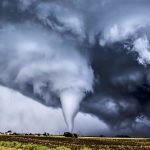When a city known for cool drizzle in “June-uary” is as hot as the Middle East it’s clear something unusual is happening.
The average June high in Seattle is 21.1C (70F), but on Monday the northwestern city hit 42C (108F).
It was the second day in a row of record temperatures, after the 40C (104F) seen on Sunday.
Fewer than half the city’s residents have air conditioning, according to US census data, and many schools and businesses have had to close.
Portland, Oregon’s biggest city – 130 miles south of Seattle, was hotter than Dubai on Monday, recording 46.6C (116F).
It was the third day of record temperatures in the city, with state capital Salem even hotter at 47.2C (117F).
Canada has also been affected and broke its all-time high on Sunday, with 46.6C (116F) recorded in the northwestern province of British Columbia.
What is a heat dome?
It is a block of high pressure that plants itself over the affected area, acting like a lid on a saucepan, trapping heat.
The US National Ocean Service says these conditions are created when “strong, high-pressure atmospheric conditions” combine with a climate pattern called La Nina, which affects sea temperatures.
Please use Chrome browser for a more accessible video player
The main trigger for a heat dome is a rise in temperatures from west to east across the Pacific in the preceding winter, according to the National Oceanic and Atmospheric Administration.
Warm air that rises over the western Pacific moves east on the prevailing winds.
Northern areas of the jet stream then trap the air and move it towards land, where it sinks, resulting in a heatwave.
The influence of climate change
The extent to which any single weather event is linked to climate change is hard to say.
However, Zeke Hausfather, a scientist with non-profit organisation Berkeley Earth, says the Pacific Northwest has warmed by about 1.7C (3F) in the last 50 years.
That rise will be “significant, especially for vulnerable populations”, he said.
Mr Hausfather added: “In a world without climate change, this still would have been a really extreme heatwave. This is worse than the same event would have been 50 years ago, and notably so.”
Governor of Washington state Jay Inslee said: “This is the beginning of a permanent emergency. We have to tackle the source of this problem, which is climate change.”
Blackouts and melted power cables
The power infrastructure in the Pacific Northwest has struggled to cope, with the surge in the use of fans and air conditioning units causing blackouts.
In Portland, trams ground to a halt as power cables melted, while roads and pavements have buckled, including on Interstate 5 in Seattle.
“Washington state was not built for triple digit temperatures,” said Senator Maria Cantwell.
Authorities have set up dozens of special cooling centres where people can take refuge from the heat, and Washington’s King County even has one especially for pets.






















